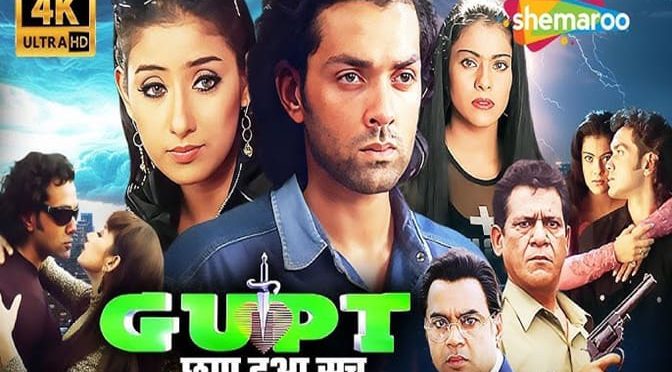Some movies don’t just entertain. They lodge themselves in your memory, haunting your idea of what cinema can do. For me, Gupt wasn’t just a movie. It was a jolt! A cinematic moment that divided how I viewed thrillers into two clear parts – Before Gupt and After Gupt.
I still remember the evening I first watched it, 27 years ago. My brother, elder and smug as ever, had just seen the film and casually said, almost like throwing away a chewing gum wrapper. “Kajol is the killer.”
I laughed. What nonsense.
Kajol? Our bubbly, loveable lead? The charming face of romance in Bollywood? She couldn’t possibly be the villain. I dismissed it the way we all dismiss spoilers we are not ready to digest.
But then I watched ‘Gupt’. And when the truth hit, when I saw HER hand, HER eyes, and finally, HER face! OMG. It was betrayal. A brilliant betrayal. It was a moment where the floor of predictability crumbled beneath my feet.
Wondering why suddenly talk about this movie now? Yesterday, I revisited it. This time with my daughter, a mystery lover in her own right who is currently hooked to Satyajit Ray’s mystery stories.
According to me, what made Gupt a narrative revolution was not just its plot twist. It was the decision to write against type. Kajol’s Isha was the embodiment of a writing choice Bollywood was too timid to make at the time. Imagine making the female lead, the heroine, the one who kills. It flipped the formulaic template where women existed to support, seduce, or suffer. Instead, Isha was fleshed out with ferocity, depth, complexity, softness and madness. Not in the caricatured ‘obsessive woman’ trope, but in a way that challenged your trust as a viewer. You were meant to believe she was incapable of it.
That was the masterstroke.
Because the film weaponised Kajol’s image. You didn’t see the killer because you weren’t looking for her. That’s not just good storytelling. That’s expert-level audience manipulation done RIGHT!
Every key player in Gupt is written with ambiguity. Bobby Deol’s Sahil is no saint and is impulsive, angry, and flawed. Manisha Koirala’s Sheetal is delicate yet emotionally intelligent, playing the foil to Isha’s intensity. But it’s Isha who steals the psychological terrain of the film. She is written not as a femme fatale, but as a woman incapable of letting go. And her arc doesn’t strive for redemption. It never softens her.
Even in the final moments, when she clutches Sahil’s hand, bleeding and broken, she says, “Maine tumse mohabbat ki thi.” It isn’t an apology. It’s an assertion.
That line stays.
Because Gupt doesn’t let its villain beg for your sympathy. It makes you face the horror of WHY she did it. Not HOW.
In terms of screenwriting structure, Gupt took significant risks. The red herrings, the pacing, the clue placements, all were meticulously orchestrated. Unlike other Bollywood whodunits of the time, which relied on shock value or conveniently introduced villains, Gupt planted the seeds early, yet somehow managed to steer the audience away from the truth till the very end.
And how can I not mention the music? Composed by Viju Shah, it acted like a subliminal character, being playful when needed, intense when secrets simmered. I love the catchy title track so much that I used it in my Instagram story yesterday while sharing about BTB’s mystery and detective fiction e-book.
When I saw my daughter intrigued and engrossed in the movie, it was a reminder of the fact that good writing doesn’t age. It just finds new readers, new viewers, new victims. Isn’t it?
Cover image credit – https://www.youtube.com/watch?v=r4SleZGW9p8
